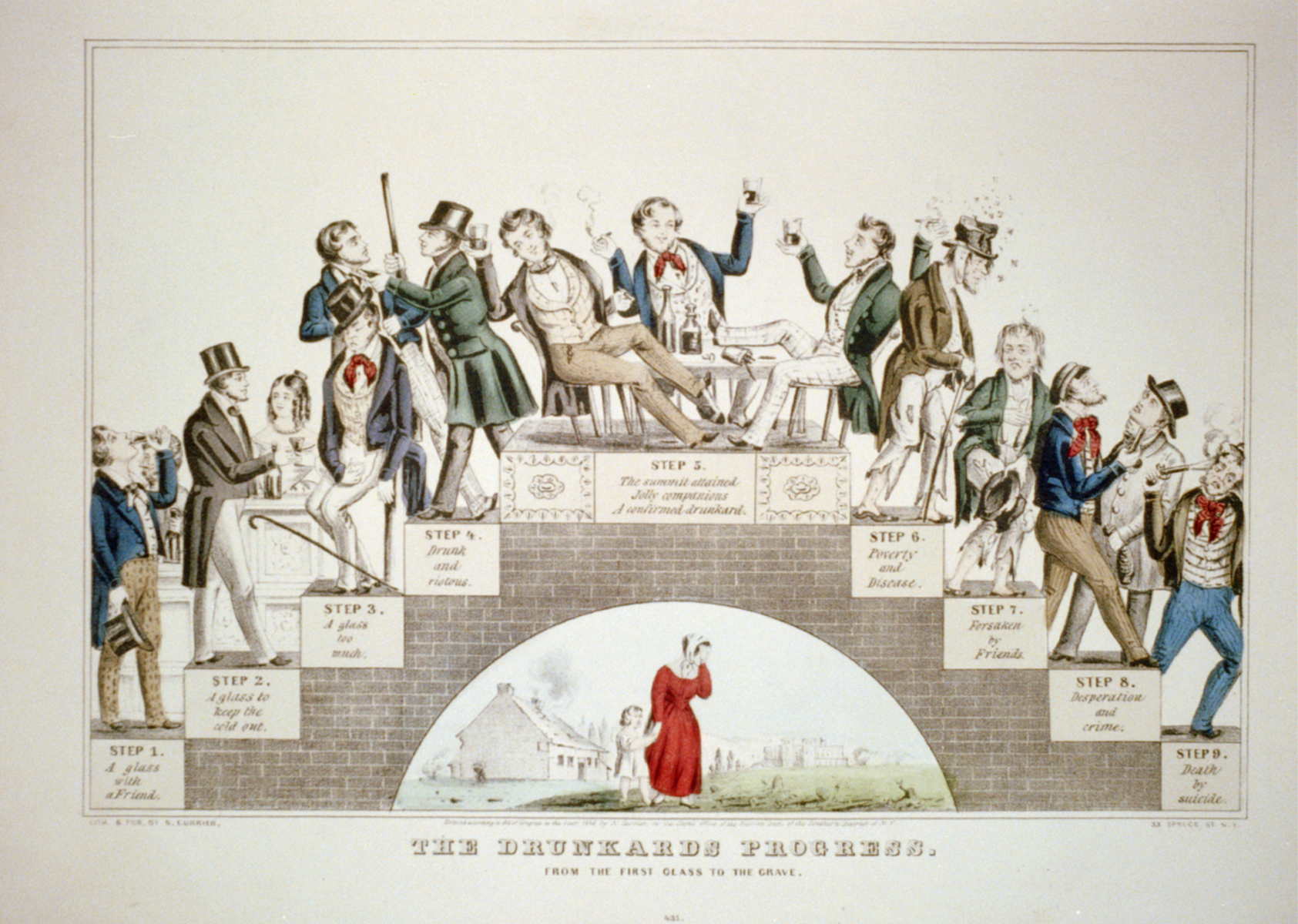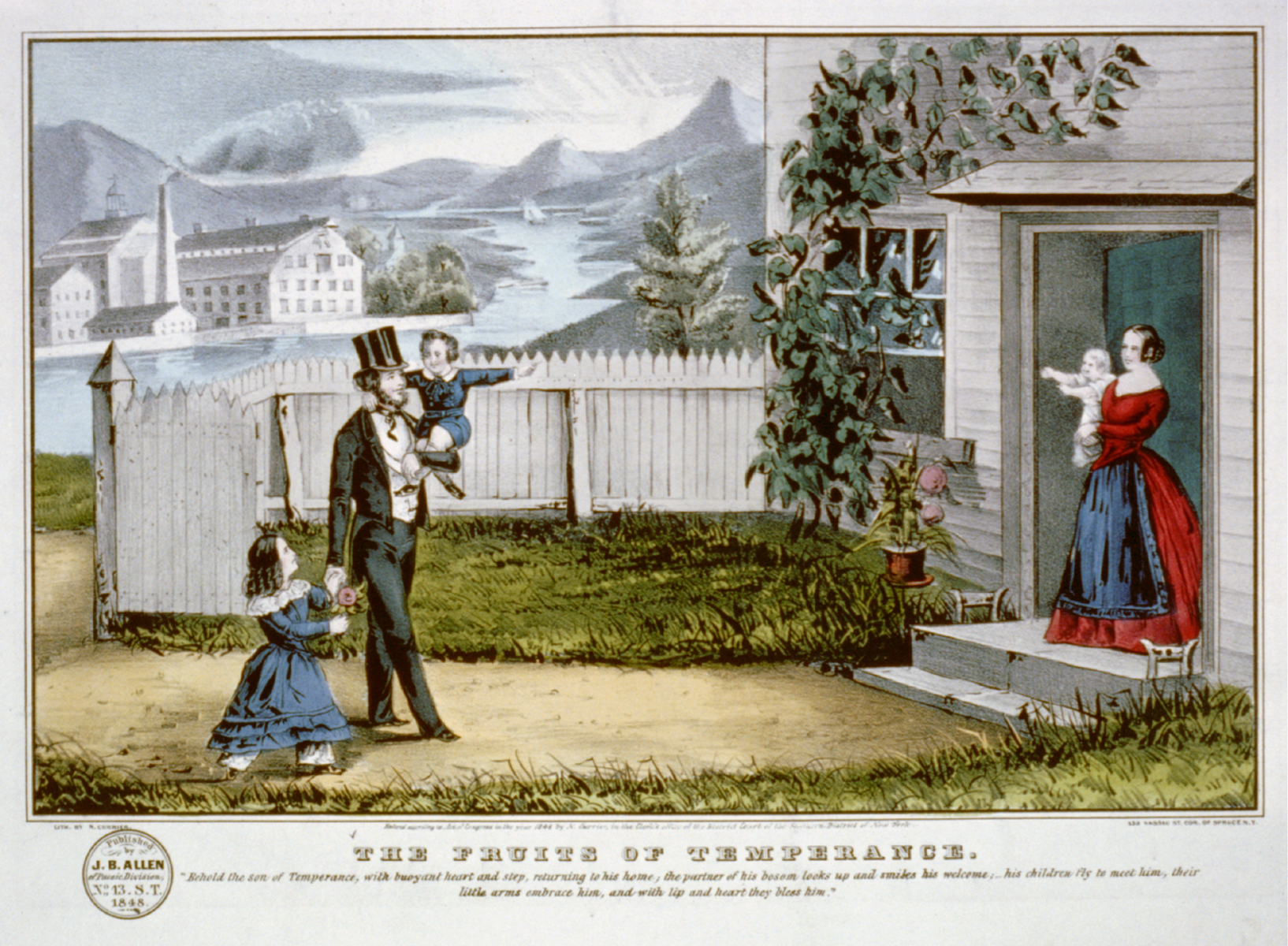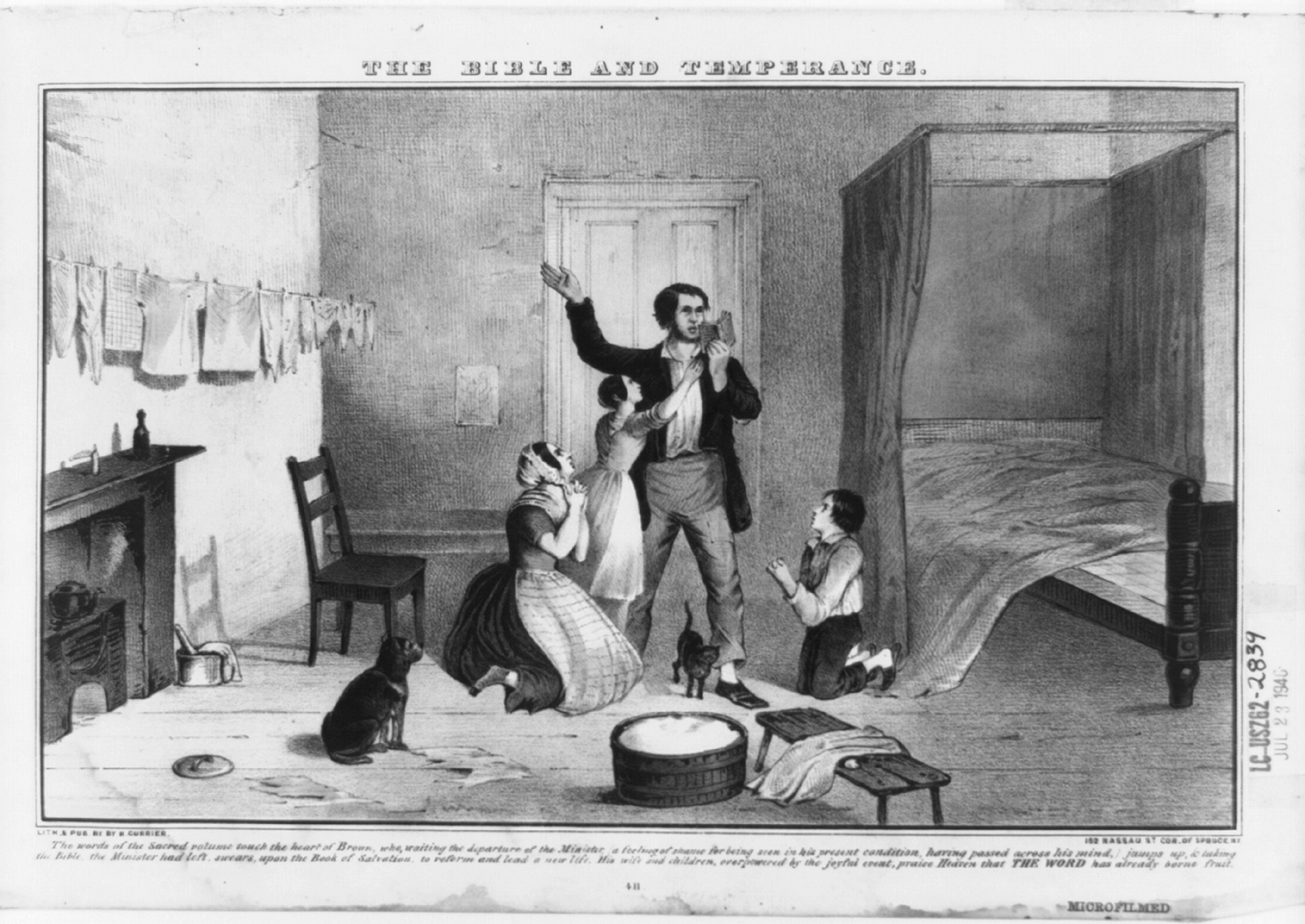Nathaniel Currier, Temperance Prints, c. 1835–1848
Nathanial Currier (1813–1888) founded Currier & Ives, the most famous nineteenth-century U.S. lithography firm (lithography is a form of cheap mass printing). From 1835 to 1907, the firm published more than 7,500 different titles and print more than 1 million copies. Currier printed a wide variety of topics of interest to the general public, ranging from historical portraits to current events, city and rural scenes, sentimental images, humor, politics, and more. Attesting to the movement’s popularity, Currier also created numerous prints related to temperance.
The first image tells the story of a young man who takes an innocent first drink. The second lithograph tells a different kind of story: what happens to a young man who has rejected alcohol. The final image is the third in a series of four. The first of the images in this series shows an honest workingman named Henry Brown being persuaded by his friend to go “make a merry night of it” over the objections of his wife and children. The second image in the series shows the results of Brown’s night out: He has gone drinking again and again, leaving his family impoverished. A kindly minister visits their now dilapidated home and reads the Bible aloud while a scruffy Brown sleeps off a hangover. The third image, shown here, shows Brown’s change of heart after taking the Bible the minster has left.
The Drunkards Progress: From the First Glass to the Grave, 1846

The Fruits of Temperance, 1848

The Bible and Temperance, c. 1835–1836

Evaluating the Evidence
Question
lKe5k3ElC8bF6TdIe3cfMpqs+r+ireUFDAS0Q4glCsnKEi6p9oFNxKvlC1H8jexjQZ3ihWpSLdXX+bkZLUiQAOhGMga9GvtlDQV9nJNjfTQKoAhop/+2Xq2/dWMK0gGFLgXJA3VlxIBF8lGDjFnSCBTlirJzuq07+mj55DeRV3UXo8VUm+q6R59YygQl+paVO7XsRWk92+WPA1wbl5WD/t+zceXN9MZWXoI8xLmKdm3N/kFQlxPeIg==Question
NIdyLqxN4nkFbCsKEFzlIthhhCV/vv20k67/kTfNN4j28vuBN5FN+F8ti7mAYdjHaXHdWJTz6EMVoKeCNedATuPEJ/j0N4YM+l+NuYT6yX4W+xoeDsEV4wi6rYkm1kkQhhF4mgn+MPMKu7/KcOefBRXoEN+fA7atKDS+GXO4/tPJqtzMsPpJ3Q==